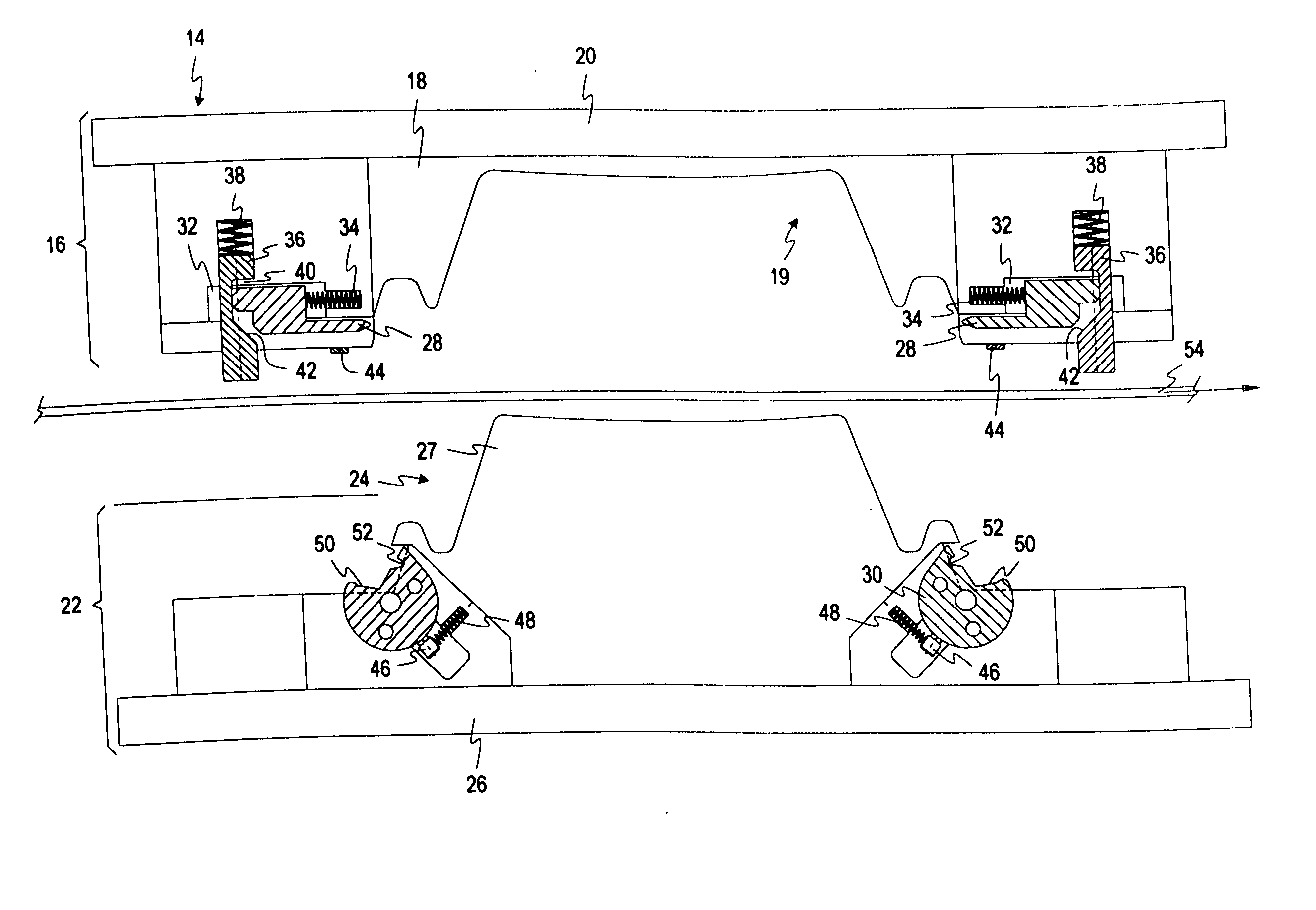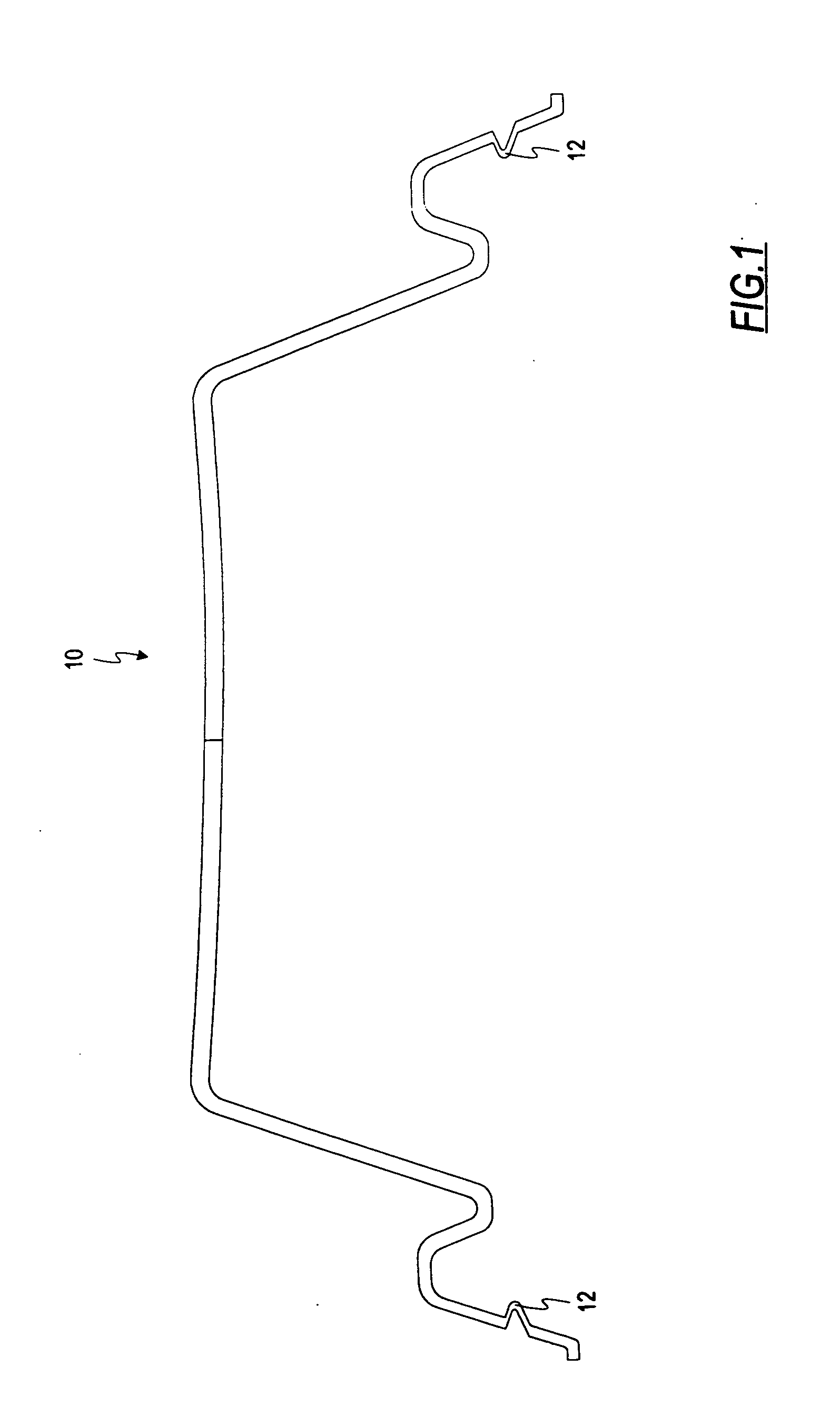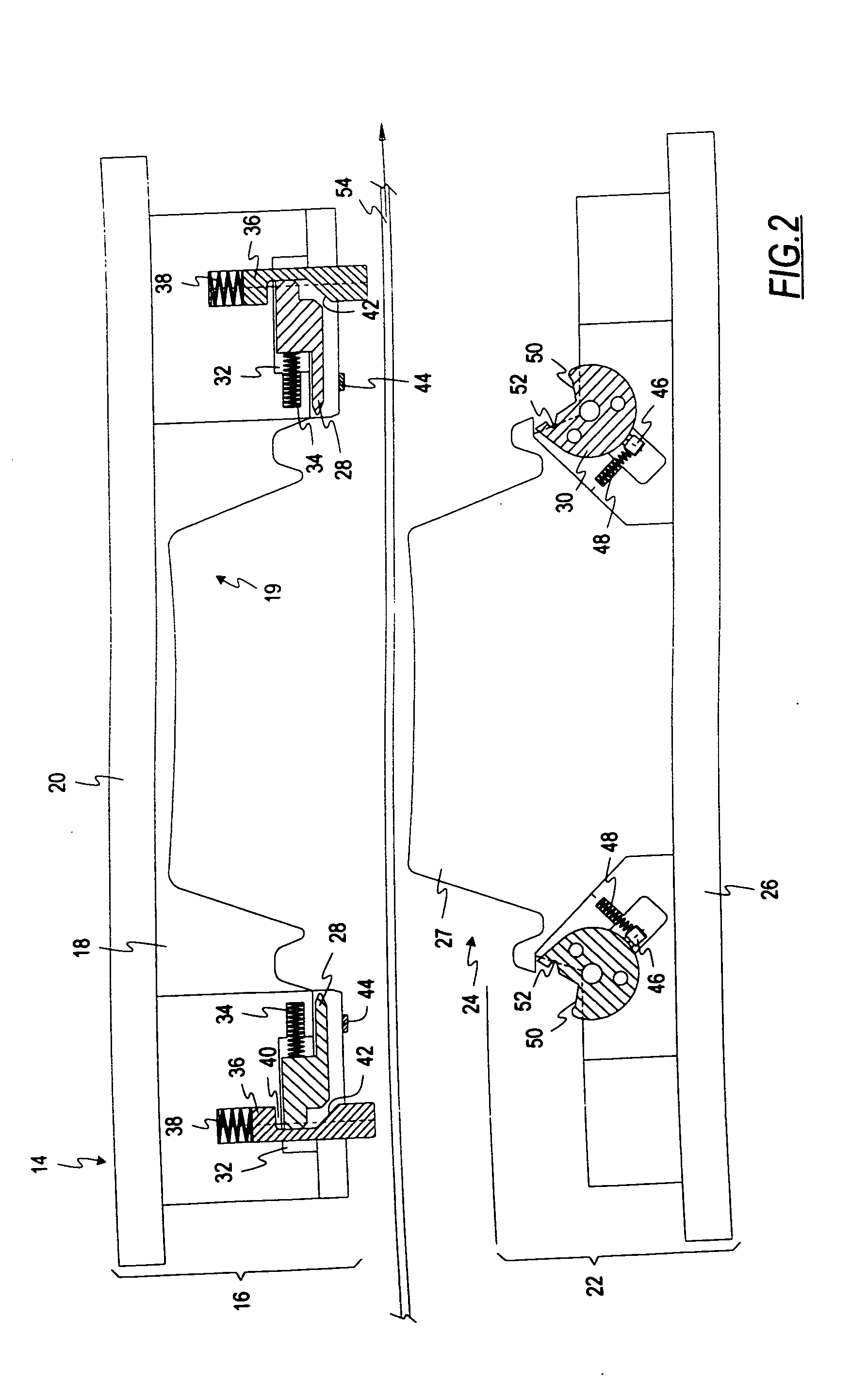Method of forming a thermoformed foam part
a technology of thermoforming foam and parts, applied in the field of thermoforming foam parts, can solve the problems of difficult to form reverse drafts or undercut difficult to form reverse drafts in foam containers, etc., and achieve the effect of not being able to achieve the continuous thermoforming process of forming parts and forming parts with reverse drafts
- Summary
- Abstract
- Description
- Claims
- Application Information
AI Technical Summary
Benefits of technology
Problems solved by technology
Method used
Image
Examples
Embodiment Construction
[0016] Referring now to the drawings, a thermoformed part 10 with a reverse draft or undercut 12 formed in accordance with the principles of the present invention is illustrated in FIG. 1. The part 10 is of a foam material such as polystyrene foam formed using matched metal tooling. It should be recognized, however, that the principles of the present invention are also applicable to sheet material and non-matched metal tooling. In the embodiment illustrated, the part 10 is a lid or cover for a foam container that can be used by restaurants, schools, hospitals, hotels, food distributors, and the like for containing items such as food. The reverse draft or undercut 12 of this embodiment serves as part of a locking structure to lock the part or cover 10 to another part, such as a tray, of a container. The ability to form the reverse draft or undercut 12 in foam products allows for different closure or locking designs and leak resistant foam containers.
[0017] In the past, thermoforming...
PUM
| Property | Measurement | Unit |
|---|---|---|
| Time | aaaaa | aaaaa |
Abstract
Description
Claims
Application Information
 Login to View More
Login to View More - R&D
- Intellectual Property
- Life Sciences
- Materials
- Tech Scout
- Unparalleled Data Quality
- Higher Quality Content
- 60% Fewer Hallucinations
Browse by: Latest US Patents, China's latest patents, Technical Efficacy Thesaurus, Application Domain, Technology Topic, Popular Technical Reports.
© 2025 PatSnap. All rights reserved.Legal|Privacy policy|Modern Slavery Act Transparency Statement|Sitemap|About US| Contact US: help@patsnap.com



